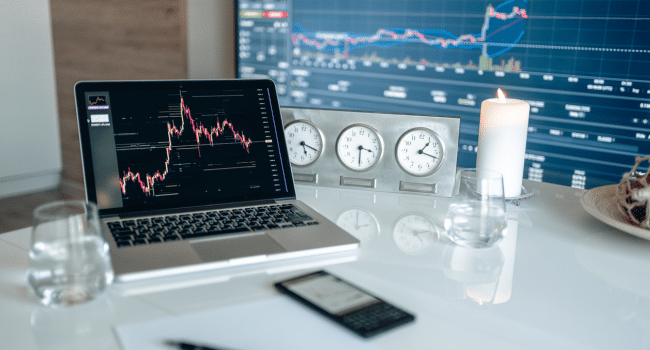Table of Contents
The first time AI trading signals were introduced into active markets, the impact was immediate. Traders accustomed to juggling a few charts at once suddenly had a system capable of monitoring hundreds simultaneously. While humans scanned a handful of setups, algorithms were identifying unusual order flows in real time, often flagging moves long before they showed up on standard technical indicators.
This was more than just another analytical tool it was a shift in how opportunities were spotted. Yet even with all that speed and processing power, AI signals were never the whole answer. Algorithms can highlight anomalies, but they cannot always interpret context. The future of trading lies not in AI replacing humans but in AI and human insight working side by side.
Breaking Down AI Trading Signals
AI trading signals are notifications generated algorithmically to reference patterns in price trends, volatility, and trading volume. Unlike traditional indicators, which run on a fixed formula, AI continues to adjust as circumstances change.
Let’s say Tesla’s options market experiences an unusual amount of call activity just before earnings. An AI system would highlight the anomaly immediately and ensure it’s not lost in dozens of active tickers. Speed is definitely one of the strongest attributes of machine learning technology, especially for options traders, where opportunity exists for minutes.
That said, machines can only identify patterns; they don’t explain them. That distinction is important. A spike in options activity could also be an indication of hedging or an institutional setup, or maybe a speculative trader may make false assumptions about signals, and signals won’t capture human analysis.
Today, many AI trading communities allow real-time alerts to drive participation while coupling the signals with discussions and interpretations, all intending to connect machine precision with human discretion.
Why Human Judgment Still Matters
Markets are driven not just by numbers but by politics, central bank decisions, and global sentiment. Algorithms process data but do not account for emotion or psychology. For instance,
when AI highlights a bullish signal on Nvidia, human expertise can add nuance: analyzing sector weakness, pending earnings, or overall risk appetite that could invalidate the setup.
This contextual reasoning ensures signals are filtered properly. Large order volume, for example, may look promising to AI but could simply represent a hedge. Only human oversight can distinguish between conviction and noise.
By merging AI’s speed with human interpretation, trades move from mechanical reactions to strategic decisions. This dual approach fosters both confidence and discipline, preventing signals from being treated as guarantees rather than opportunities.
Why Options Trading Gains the Most
Options trading stands out as a natural fit for AI-enhanced strategies. Three qualities explain why.
First, leverage. Options provide exposure to a larger number of shares for significantly less capital. When paired with AI’s rapid alerts, opportunities can be acted upon with precision.
Second, risk is defined. Unlike stocks, where risk is theoretically unlimited, options have a capped downside equal to the premium paid. This structure makes it easier to manage risk when working with fast-moving AI signals.
Third, flexibility. Options strategies adapt to nearly any market condition. Whether through protective puts, covered calls, or volatility-based plays, traders can benefit regardless of direction. AI is particularly effective at spotting volatility changes, making it a strong complement to these strategies.
That is why many trading groups now have a mix of AI alerts and group strategy discussions. It encourages participants to see how the signals translate to real trades.
The Value of Trading Communities
Trading without support often leads to common pitfalls: overtrading, chasing losses, or ignoring risk plans. Communities provide a safeguard against these tendencies by introducing structure and accountability.
Instead of receiving signals in isolation, community members see them discussed and contextualized. New traders gain frameworks for learning, while experienced traders exchange perspectives that sharpen strategies. This collaborative environment reduces the likelihood of impulsive mistakes and encourages disciplined execution.
Another often-overlooked benefit is accountability. Adhering to a plan becomes easier when trading alongside peers who reinforce best practices. In high-speed markets, that accountability acts as a stabilizing force.
Conclusion
The future of trading is not a competition between machines and humans but a collaboration. AI provides unparalleled speed and data analysis. Human analysts bring judgment, context, and the ability to interpret complex market psychology.
For options traders, this balance is especially valuable. Options’ leverage, flexibility, and risk-defined nature pair naturally with AI’s ability to flag high-probability setups. When combined with the discipline and shared knowledge of a trading community, the result is a more structured, confident approach to the markets.
Rather than replacing human expertise, AI enhances it. Signals identify opportunities. Human insight filters them. Communities reinforce discipline. Together, these elements create a trading environment that is smarter, sharper, and better prepared for the challenges ahead.
